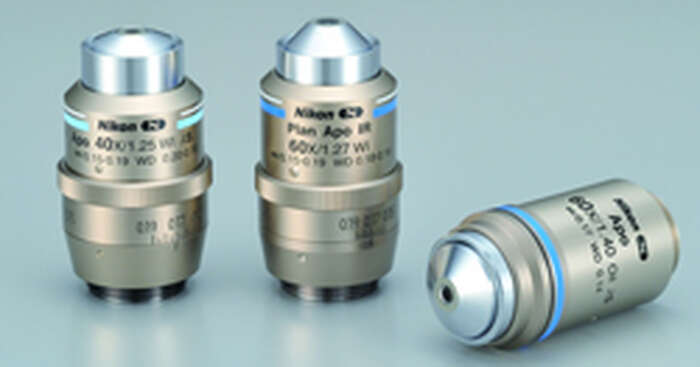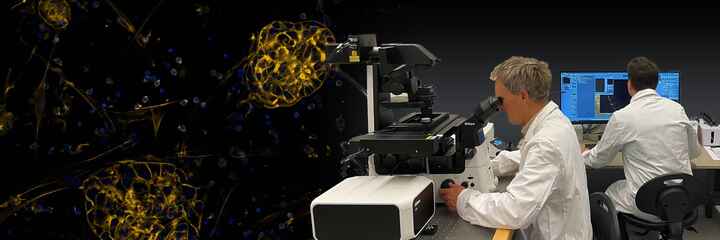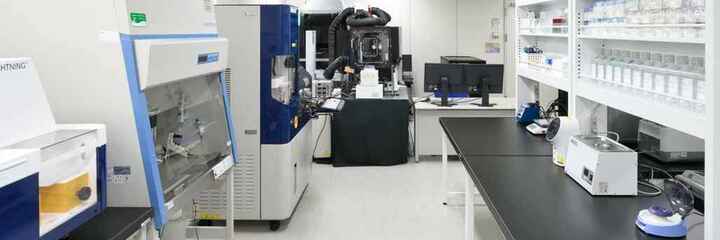News
Nikon Instruments Introduces New High Performance Objectives With World's Highest Numerical Apertures Among Water-Immersion Objectives
Oct 15, 2009
New Lambda S Objective Series Employs Nikon’s Unique Nano-Crystal Coat Technology; Optimized for Live Cell Imaging

Nikon Instruments, Inc. today introduced the Lambda S Objective Series of high performance objectives for use with biological microscopes. The Lambda S Objective Series, which includes CFI Apo 60X H Lambda S, CFI Apo 40X WI Lambda S and CFI Plan Apo IR 60X WI, features the world’s highest numerical apertures (NA) for water immersion (WI) objectives at 1.25 and 1.27, while providing the highest transmission rates at a broad range of wavelengths. This results in faster image capture times at lower excitation levels, achieving less photobleaching and longer cell life. In addition, these new objectives feature the highest chromatic corrections for the sharpest contrast imaging and longer working distances for the deepest image capture.
For the first time, the Lambda S Objectives employ Nikon’s unique Nano-Crystal Coat technology, an antireflective coating that virtually eliminates internal lens element reflections across a wide range of wavelengths. It is particularly effective in reducing stray light reflections and flare in high angle (large NA) lenses, enabling very high transmission rates over a broad range of wavelengths extending from the ultraviolet to the infrared. Nikon’s exclusive Nano-Crystal Coat employs multiple layers of extra-low refractive index coating, which features ultra-fine crystallized particles of nanometer size. This technology was developed for Nikon’s world famous Photolithography semiconductor manufacturing products and is now available for advancing the performance of microscope objectives.
“Thanks to recent developments of new microscope technologies such as spectral imaging, fluorescence observation with the use of multiple wavelengths of light and near-infrared light imaging applications, there is an increased need to observe live cells for longer periods of time while minimizing damage caused by the excitation light,” said Stan Schwartz, vice president, Nikon Instruments, Inc. “We believe these three types of objectives will significantly contribute to live cell imaging works that are carried out in research institutes of biology and medicine as well as in core laboratories and universities.”
Manufacturing technology and Nikon's unique optical design technology together have lead to startling improvements in objective specifications and performance levels. In particular, the CFI Apo 40X WI Lambda S corrects chromatic aberration from 405nm to 850nm with an NA of 1.25 and the Plan Apo IR 60X WI NA 1.27 from the visible range to 1064nm, facilitating infrared light imaging techniques like multiphoton excitation and laser tweezers applications. These new high performance objectives, as well as the CFI Apo 60X H Lambda S, are specially designed for the most demanding multiphoton microscopy applications. Greatly improved brightness in fast (>30 frames per second) multiphoton confocal acquisition will allow researchers to study the fastest biological events.
Nikon also recently released the CFI LWD APO 40X WI water immersion objective with an NA of 1.15, an extremely long working distance of 610 microns and has chromatic correction from 405nm to 950nm with very high transmissions rates. This coincided with the introduction of Nikon’s new multiphoton excitation system for the Nikon A1R laser scanning confocal system.
Nikon will release the Lambda S Objective Series of high performance objectives for use with biological microscopes at Neuroscience 2009 in Chicago.



